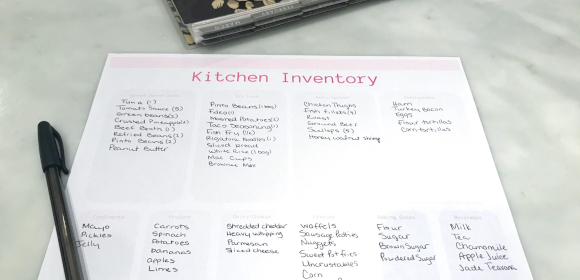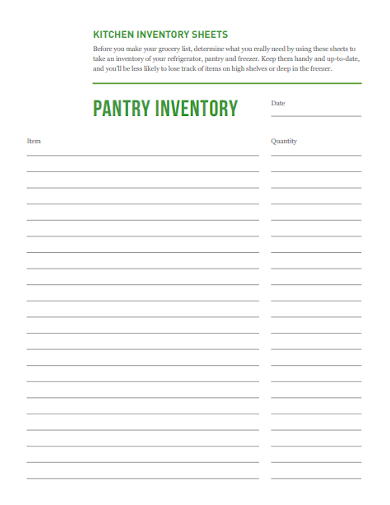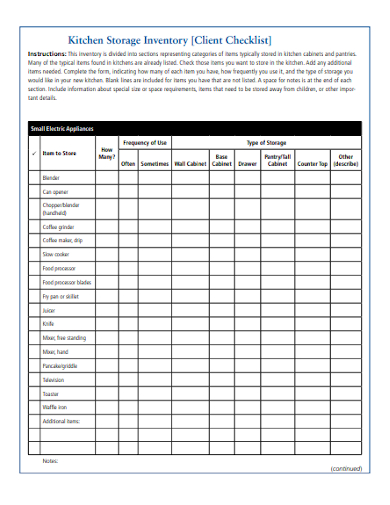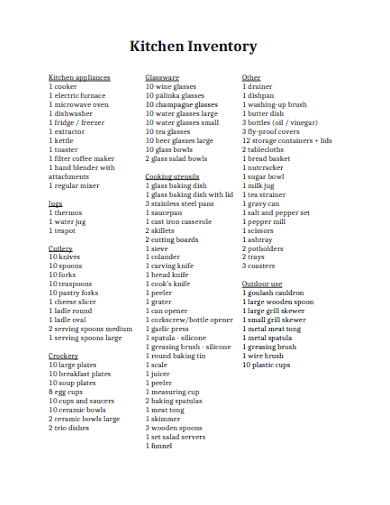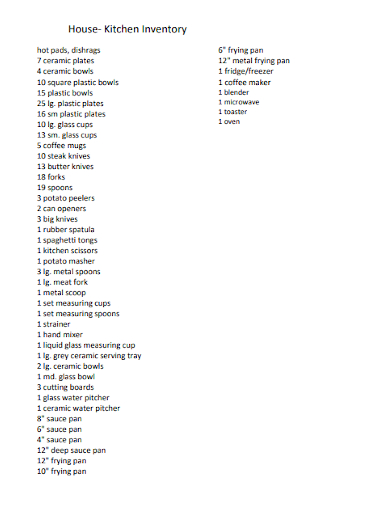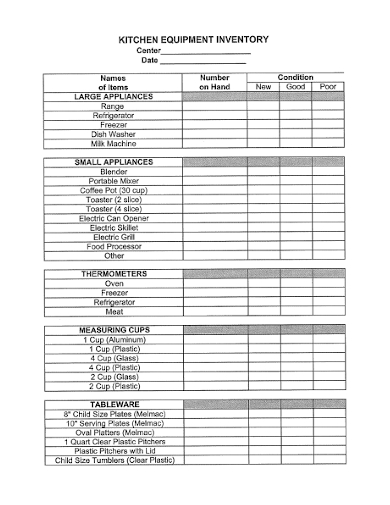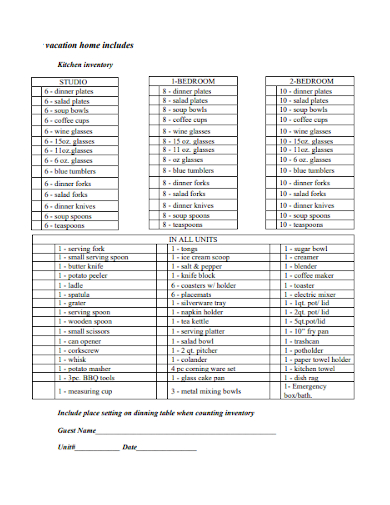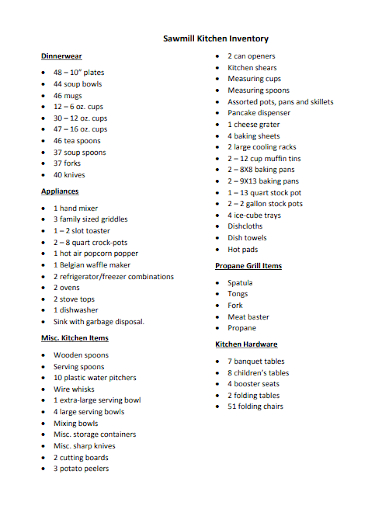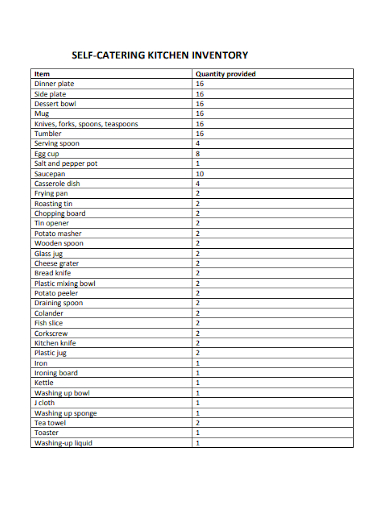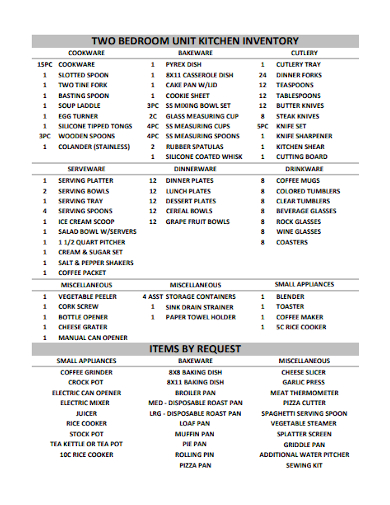One of the most important aspects of running a restaurant is making sure you have everything you need in your kitchen. This isn’t limited to the food supply and ingredients but the equipment and cooking materials as well. Even if you are one who enjoys cooking, it is important to have all your supplies and ingredients ready and on hand so you are able to enjoy your meal. And this rings true for restauranteurs since food is the main product of every restaurant then the importance of maintaining a kitchen inventory is tremendous. Let’s say you lack a certain ingredient or the stove isn’t working well, then this can cause business disruption and you will be losing customers in the process. In this article, let us discuss further below how to efficiently manage a kitchen inventory. If you need any help preparing this particular inventory, then check out our free kitchen inventory samples that are downloadable on this page.
10+ Kitchen Inventory Samples
1. Restaurant Kitchen Inventory Sheet Template
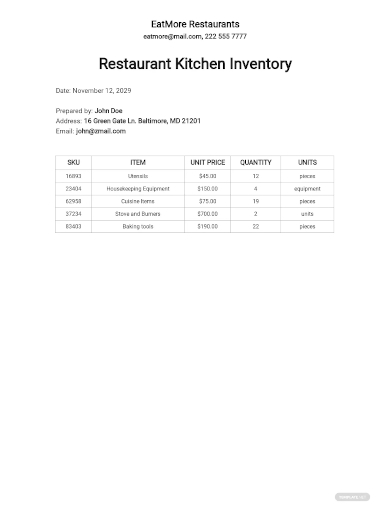
2. Kitchen Inventory Sheets
3. Kitchen Storage Inventory Checklist
4. Sample Kitchen Inventory
5. House Kitchen Inventory
6. Kitchen Equipment Inventory
7. Vacation Home Includes Kitchen Inventory
8. Sawmill Kitchen Inventory
9. Self Catering Kitchen Inventory
10. Two BedRoom Unit Kitchen Inventory
11. Large Retreat Kitchen Inventory
What Is a Kitchen Inventory?
Businesses like restaurants or other food services must be able to track their food inventory and other important aspects needed to run their business. Since preparing food is done in the kitchen, then for obvious reasons restaurant managers must see to it that everything in the kitchen is available for usage. From equipment, cooking utensils to food ingredients. If one or two things are gone or are unavailable then this may affect the business. Although some minor issues can be easily dealt with, once certain kitchen equipment isn’t functioning then this can create a negative impact not only to the clients but can be a costly affair as well. With an efficient kitchen inventory, managers are able to ensure that every stock and supply is well-managed and organized. This will also help them determine if there are any underlying issues that need to be attended to immediately.
How To Manage a Kitchen Inventory?
Whether you run a small or large-scale restaurant or catering business, managing a kitchen inventory can be a challenging job. But it needs to be done if you want to successfully run your business. And this is never a one-time or weekly process since one of the basic components in your kitchen are ingredients and other produce, so managing inventory must be done on a regular basis. By knowing what supplies are on hand at a given time, the manager will be able to plan food orders, calculate food costs from the previous inventory, and make menu item changes if needed. By keeping an eye on inventory, it is possible to note potential problems with pilferage and waste. Now each company may have its own ways of managing its kitchen inventory, but here are several tips below to help you.
I. Assemble a Team
You need a team whose responsibility is to check the inventory on a daily basis. Since this is a kitchen, there are several components to take into consideration. This may be done by the manager, supervisor, and the chef.
II. Set Up a System
To help you get properly organized, setting up a system to track and record inventory is important. The simplest method for tracking inventory is using a spreadsheet. A simple spreadsheet might list all of the products that are regularly purchased, with the current prices and the numbers on hand at the last inventory count.
III. Scheduling
Designing a schedule to check the kitchen inventory is crucial, when it comes to food, produce, and other perishable items then it is important to check this on a daily basis. Whereas other utensils and kitchen equipment must be checked on weekly or a set schedule. Your food items are not the only thing that matters in the kitchen, you need utensils and equipment to be able to operate the business efficiently.
IV. Procedure of Purchasing and Receiving Deliveries
In most cases, restaurants are bound to purchase ingredients on a daily or weekly basis to keep up with the demand of their clients. Establishing a proper procedure for purchasing products is important to ensure that there are no discrepancies or misplaced items. Also, once the deliveries come pouring in, managers should be able to properly manage the deliveries since errors frequently occur, and unless the quantity and quality of the items delivered are carefully checked against what was ordered, substantial losses can take place. When receiving procedures are carefully performed, mistakes that could cost the restaurant time and money are avoided.
V. Covering All Items
It is important to regularly monitor and check your inventory, ensuring that all important items and materials in the kitchen have been covered. Don’t do the checking only if there is a need to, but do it because it is an important responsibility.
FAQs
What Is the Difference Between a Kitchen and a Pantry?
A kitchen is an area where food is prepared and cooked. While a pantry is a sort of storage area for food that does not need to be refrigerated or frozen.
What Is an Inventory Management?
This is the process of organizing, managing, ordering, storing, and using a company’s inventory: raw materials, components, and finished products.
Why Do Companies Need Inventory?
Companies need inventory because they need to be able to keep track of their products, raw materials, and other important components needed to effectively run their business.
A kitchen is an important area not only in every household but for businesses engaged in food services. So proper kitchen inventory is needed so you are able to make sure you have everything needed to prepare and cook your food meals.
Related Posts
FREE 16+ Sample Printable Food Log Templates
FREE 12+ Sample Food Truck Business Plan Templates
FREE 10+ Kitchen Cleaning Schedule Samples
FREE 10+ Restaurant Management Plan Samples
FREE 10+ Kitchen Inspection Checklist Samples
FREE 9+ Equipment List Samples
FREE 8+ Sample Cooking Conversion Chart Templates
FREE 7+ 7-Day Diet Plan Samples
FREE 3+ Food Safety Audit Checklist Samples
FREE 17+ Sample Food Order Templates
FREE 10+ Kitchen Cleaning Checklist Samples
FREE 9+ Property Inventory Templates
FREE 8+ Home Inventory Templates
FREE 8+ Grocery List Samples
FREE 7+ Equipment Checklist Samples & Templates
